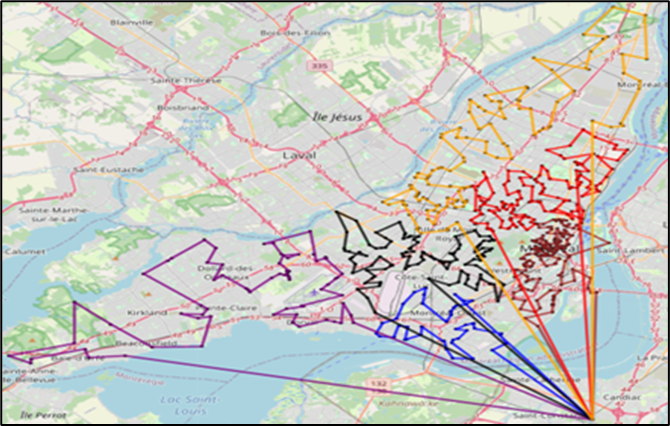Professor Amin Chaabane and his team have studied the impact of setting up circular cafés to improve the collection of coffee grounds. Discover the summary of their work.
Summary
As the upward trend in coffee consumption persists, Spent Coffee Grounds (SCG) utilization becomes increasingly imperative due to its richness in various organic compounds such as fat, cellulose, hemicellulose, and lignin, which hold potential for diversified applications. Integrating coffee waste into the circular economy framework is essential for promoting sustainability—nevertheless, uncertainties surrounding the collection process present challenges in efficiently managing circularity within the coffee value chain. In response to these challenges, we propose an innovative and sustainable system designed to optimize the process while mitigating adverse impacts on the environment, society, and final product quality.
This system entails the establishment of circular coffee shops (CC) functioning as local collection depots within the coffee waste network and equipped with smart bins and pre-drying technologies. Considering social and environmental implications, we have carefully evaluated these circular coffee shops’ optimal location, allocation, and routing strategies. This study serves as a testament to our optimism regarding the potential of novel business models aimed at creating intelligent and sustainable systems for collecting and treating SCG. Furthermore, it explores the exciting prospect of integrating Industry 4.0 (I4.0) technologies within the coffee value chain, emphasizing how these advancements can address existing uncertainties.
The research focuses on the evaluation of two distinct models: one involving circular coffee shops and the other not. Both models offer valuable insights into advancing circularity in coffee waste management. This research framework encompasses data management, optimization, and financial evaluation modules. In business model 1, a group of coffee shops generates spent coffee grounds (SCG), which are then collected by electric trucks and transported to a treatment facility to produce activated carbon for use in water purification, air filtration, and gas separation. In business model 2, SCG is transported to circular coffee shops by bike. These circular coffee shops function as local depots equipped with smart bins and pre-drying technologies, thereby reducing contamination risks and improving the efficiency of SCG collection. The dehydrated SCG is then transferred from the circular coffee shops to the treatment facility.

Upon comparing the outcomes of both business models, as depicted in Figures 2 and 3, the study emphasizes tangible advantages such as decreased collection costs, minimized contamination, and improved final product quality. It also aligns with the principles of the circular economy and provides valuable support to decision-makers in their endeavors.


